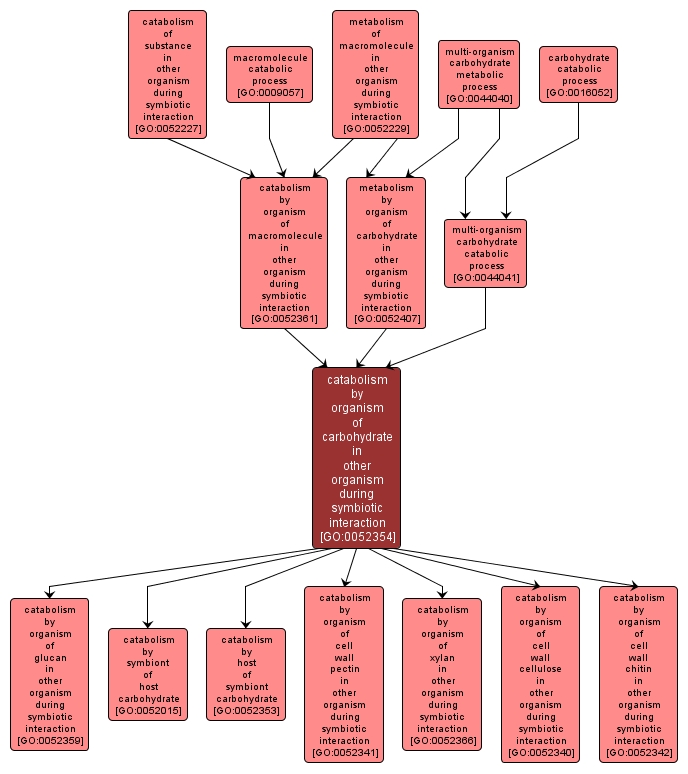GO TERM SUMMARY
|
| Name: |
catabolism by organism of carbohydrate in other organism during symbiotic interaction |
| Acc: |
GO:0052354 |
| Aspect: |
Biological Process |
| Desc: |
The chemical reactions and pathways performed by an organism resulting in the breakdown of carbohydrate molecules within a second organism, where the two organisms are in a symbiotic interaction. |
|

|
INTERACTIVE GO GRAPH
|














